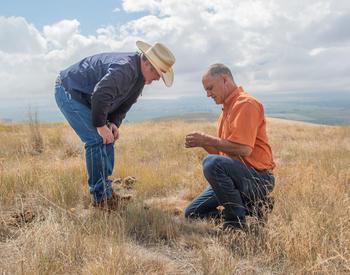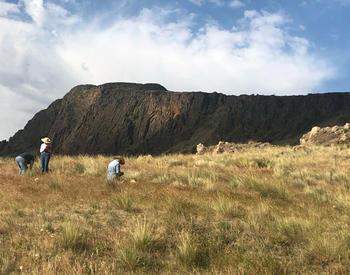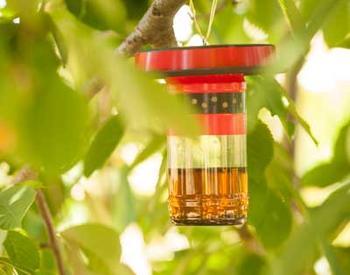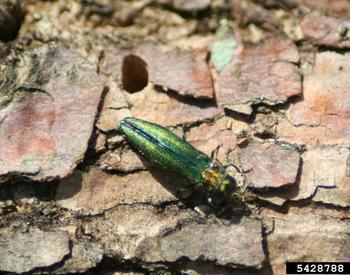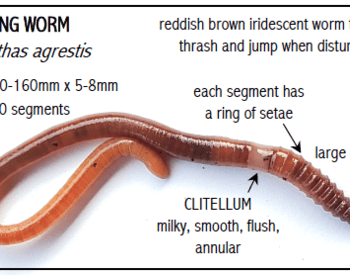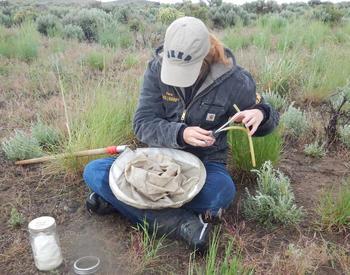Invasive plants rarely provide the functions that native plants do for providing good streamside habitat. The replacement of a native streamside plant community by only one species of weed is not beneficial to wildlife and makes for a boring garden.
Do not garden with these plants!
These plants may have some tempting garden qualities such as pretty flowers or an inexpensive price. However, not only will you regret planting them, the ecosystem will suffer too. They will quickly escape your garden and invade the rest of your garden and further downstream. In fact, some or all of these plants may be in your garden already.
-
Butterfly bush (Buddleia davidii) — Popularly planted to attract butterflies, it only provides nectar (eaten by adults) and outcompetes the native host plants (eaten by caterpillars). And while adults can find nectar from a variety of sources, caterpillars are much more finicky, often eating only one type of plant. If caterpillars can’t find food, there won’t be butterflies! Butterfly bush has escaped from gardens and has invaded natural areas and is now listed in the state of Oregon as a noxious weed.
-
Japanese knotweed (Polygonum cuspidatum) — Introduced as an ornamental to provide screening in landscaping. It thrives along streams and spreads by stout rhizomes, which can be very difficult to remove and even survive severe floods.
-
Purple loosestrife (Lythrum salicaria) — Whether it was accidentally transported to North America via ship ballast or with raw wool, or purposefully because of its pretty purple flowers, purple loosestrife has been steadily moving west across the continent taking over native habitats since the 1800s. It outcompetes and replaces native grasses, sedges and other flowering plants (including rare orchids!) that provide a higher quality source of nutrition and habitat for wildlife.
-
Yellow flag iris (Iris pseudacorus) — Still available in some nurseries though it is banned in Oregon. Yellow flag iris colonizes and forms a very dense stand of itself, out-competing other plants. While its yellow flowers are quite pretty, it offers little wildlife and streamside stabilization value.
-
English ivy (Hedera helix) — A commonly used evergreen groundcover that also is a climbing vine. As a groundcover, its dense growth outcompetes native plants; as a climbing vine, it will slowly and steadily kill the tree it has climbed, blocking light and killing branches. Removal costs of English ivy in some Oregon parks have reached $2,000 per acre.
-
Reed canary grass (Phalaris arundinacea) — Grows in dense stands of bright green along streams throughout the Willamette Valley, spreading by rhizomes, rhizome fragments and abundantly produced seeds (each flower can produce 600 seeds!). Grown as a forage species, reed canarygrass is an important component of lowland hay from Montana to Wisconsin. One variety, with variegated leaves, is sold as an ornamental.
-
Himalayan blackberry (Rubus armeniacus) — An aggressive invader that was introduced into North America for its excellent fruit. Although its fruit is widely consumed by wildlife, its dense thickets can limit movement of large animals making it a poor functional replacement for a diverse native riparian floodplain.
How to remove invasive plants
Most likely, removing weeds along your streamside garden will require several different management techniques used together. But an ounce of prevention is worth a lot. Simply don’t plant weeds or pull/dig them out as soon as you notice them so that they don’t gain a foothold. Some of them, such as reed canary grass, do poorly in shade. So planting trees (which brings other benefits to the stream as well) may help.
Tips for reducing your impact on the stream's health
- Be careful not to allow overspray to drift into the stream channel.
- Try to minimize soil disturbance to discourage the growth of annual weeds.
- Mowing or spraying directly around each seedling may be required until the plants have cleared the competing weed growth.
- Contact the OSU Extension Service Office for more information on herbicide selection and use.
Resources
- Oregon Department of Agriculture, Plant Division, Noxious Weed Control: Mission: To protect Oregon ́s natural resources from the invasion and proliferation of exotic noxious weeds.
- No Ivy League: Based in Forest Park, Portland, a good source for techniques for ivy removal.

